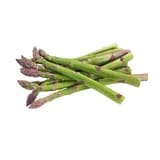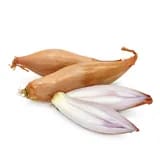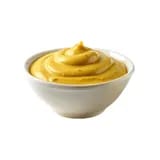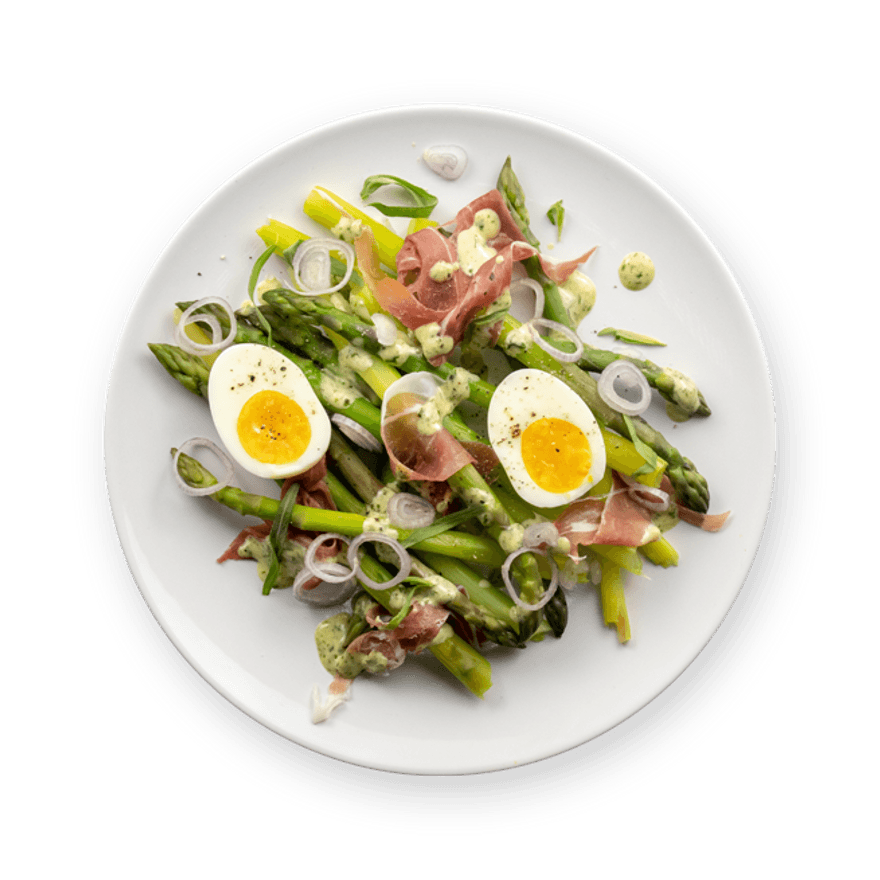Ingredients
Make sure you have...
Utensils
Stovetop, Pot (small)
recipe

Step 1
Wash & remove the woody ends off the asparagus, using a sharp knife. Peel the stalks.

Step 2
In a pot of salted boiling water, add the asparagus. Cook them for 7-10 min.

Step 3
Meanwhile, in second pot of boiling water, cook the eggs for 6 min.

Step 4
Meanwhile, peel & slice the shallots into thin rounds.



Step 5
Prepare the vinaigrette. In a bowl, combiner : the mustard, vinegar, 1 tablespoon of olive oil per serving & the finely minced tarragon. Season with salt & pepper.
Step 6
Once the asparagus & eggs are cooked through, place them in a bowl of cold water to stop the cooking process. Carefully peel the eggs.

Step 7
Plate the asparagus and halved eggs, torn ham, finely chopped shallots, and then drizzle everything with the dressing. Option: Feel free to garnish with some tarragon leaves if you have any. Enjoy!
Step 8
Serve the asparagus in a plate with the sliced soft-boiled eggs & cured ham. Drizzle over with the tarragon vinaigrette & season with salt & pepper to taste. Top with the minced shallots & enjoy !
Personal notes
Add your own flavor!
Nutrition facts
Average estimated amount for one serving
| Energy | 304 cal. |
| Fat | 16 g |
| Carbohydrates | 7 g |
| Protein | 30 g |
| Fiber | 6 g |
Values are based on an average estimate for one serving. All nutrition information presented on Jow is intended for informational purposes only. If you have any concerns or questions about your health, please consult with a health-care professional.
On average, one serving of the recipe "Asparagus in Tarragon Vinaigrette" contains 304 Energy, 16 g of Fat, 7 g of Carbohydrates, 30 g of Protein, 6 g of Fiber.
Price per portion
| € | Nos recettes à -2 € par portion |
| €€ | Nos recettes entre 2 € et 4 € par portion |
| €€€ | Nos recettes à +4 € par portion |
Please note, the price above is dependent on your grocer and the available products in the grocery store you chose.
Scores


B Nutri-score
The Nutri-score is an indicator intended for understanding nutritional information. Recipes or products are classified from A to E according to their food composition to promote (fiber, proteins, fruits, vegetables, legumes, etc.) and foods to limit (energy, saturated fatty acids, sugars, salt, etc.).
B Green-score
The Green-score is an indicator representing the environmental impact of food products. The recipes or products are classified from A+ to F. It takes into account several factors on the pollution of air, water, oceans, soil, as well as the impacts on the biosphere. These impacts are studied throughout the product life cycle.
Retrieving reviews...



